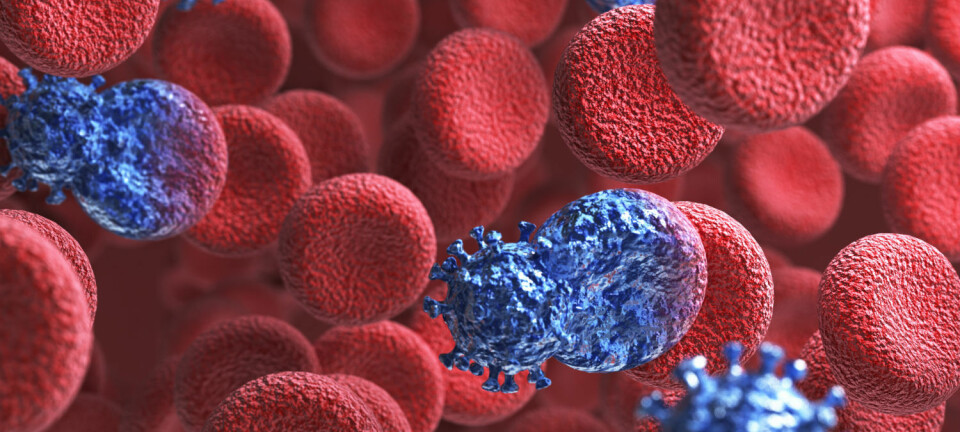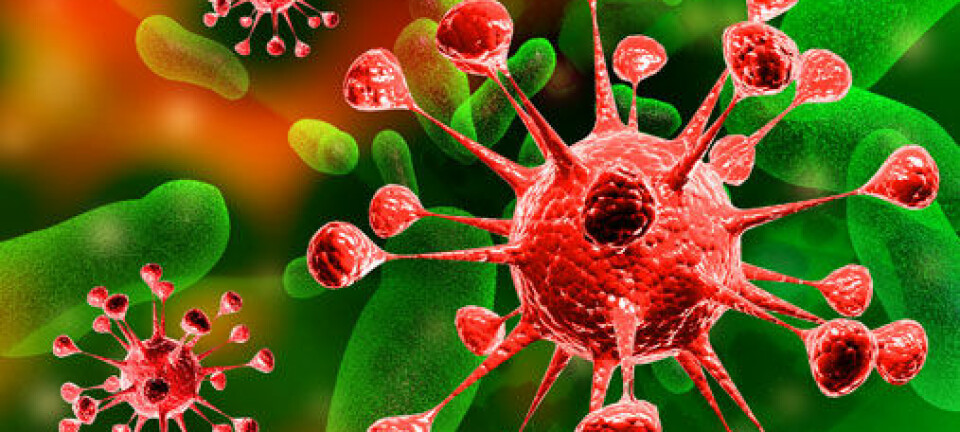Making the building blocks for artificial life
Irep Gözen has a singular goal — to make an artificial cell from the bottom up.
Irep Gözen has an obsession: she’s fascinated by making non-living materials that behave as if they were alive. Call it a kind of artificial life.
One of her creations, a bleb that swims like an amoeba but that is definitely not alive, was made from lipids, fats like are found in cooking oil or margarine. Oil and water don’t like to mix, so Gözen’s lipids form a thin skin, an artificial cell membrane, in wet environments. All on their own.
“I want to know: What can materials in the cell do entirely on their own?” she says.
Gözen started her studies in Turkey, continued with a doctorate at Chalmers Technical University in Sweden and came from a research position at Harvard-MIT to the Oslo Research Park eight months ago.
At the Norwegian Center for Molecular Medicine, Gözen is continuing to make the building blocks of life out of non-living materials. She builds pieces that can become life, the building blocks for molecular building blocks.
These molecules are organic, but have never been alive. Organic molecules - such as methane - are found everywhere in the universe.
"I'm trying to figure out what these non-living materials do with a living cell," she says.
Incorrect folding of proteins
Her latest creation is the first step towards an artificial endoplasmic reticulum — or E.R., as biologists call it.
E.R. is one of the cell's organs, or organelles, as they are called. E.R. does a lot of different things, including helping proteins to fold into the shape they need to be in to do their job in the body.
If E.R. is stressed, the proteins may not fold properly. This can trigger diseases such as Alzheimer's and Parkinson's disease or insulin resistance, which in turn can cause a form of diabetes.
Understanding how E.R. works and how it gets stressed can thus provide new ways to fight these and other diseases. Gözen is working towards exactly this kind of understanding in association with colleagues from across the globe.
One trick at a time
"There are several European research groups working with artificial cells," Gözen says.
But before the researchers can run, they have to learn to walk. Gözen's artificial E.R. can’t fold proteins — yet.
That’s because Gözen’s creation is a simplified version of E.R. and can only do one thing that real E.R. does, which is to curl up. It also doesn’t use the same energy source as real E.R. does to curl.
But that is how scientists have to work when they want to understand life from scratch.
“I’m focused on just one trait, a behaviour. That enables you to work with only a few building blocks,” says Gözen.
Artificial endoplasmic reticulum: Two recordings of Irep Gözen’s simplified version of endoplasmic reticulum. The video is from Biomaterial Science, 2017, 5, 1256-1264.
Downwards and upwards - or from top to bottom
These simple building blocks allow Gözen and her colleagues to assemble parts that can do more and more.
Other researchers are working in the opposite direction, from top to bottom.
These researchers start with living cells. They then change one gene and watch how the cell changes. With this approach, they are trying to find their way deeper and deeper into the mysteries of the cell.
Stop that cell!
Whether you work from top to bottom or bottom to top, cells contain many mysteries, Gözen says.
"We still don’t know how cells move. Do they roll on a surface like a car on wheels or do they crawl like a larva by contracting and expanding?” she asks.
This is more than just scientific curiosity. Cancer cells move — they spread —with serious consequences.
If we understood what started cancer cells moving, we might be able to stop their spread.
"Cancer research may seem like a black hole of complexity, but there may be something simple there that we can manipulate,” says Gözen.
Tiny helpers
This is the practical benefit of this kind of research. Important medical approaches can come from simple mechanisms inspired by living cells.
Small biomachines could have an effect on cancer cells. Or they could deliver medication exactly to where it is needed in the body.
Researchers are also working to create artificial cells that can replace antibiotics.
Someday, these mechanisms might also be used in tiny robots that travel in the blood stream and do microsurgery or other medical interventions.
Physicist Richard Feynman suggested this possibility in a lecture in 1959. Now — almost 70 years later — Gözen and many other researchers are working on realizing his vision of being able to "swallow a surgeon", as Feynman phrased it.
A minimal artificial cell
But Gözen’s ultimate goal is to assemble these artificial building blocks into something that’s more than just a tiny helper.
"The ultimate dream is to create a minimalistic cell that can do the same as a real cell, and that has a metabolism and can multiply," she says.
This is a goal that is far in the future. The materials she works with are difficult to handle. She needs complicated equipment.
"I can’t just buy equipment for my microscope and get it to work right away. I have to make it work,” says Gözen.
Fortunately, the field is developing all the time, and new technology — like nanotechnology — can help.
-------------------------------------
Read the Norwegian version of this article at forskning.no
































